Enphase has a few things going on for it recently. First, they’ve had a few quarters (Q4’18, Q1’19, Q2’19 and Q3’19) where their numbers have been great, and Wall Street has driven the stock price from $5.42/share to just over $23 – 424% growth. And secondly, in this author’s opinion, they’re got an absolutely amazing product in the wings – the IQ8.
Most recently though, the company has released installation guidelines and hardware specifications for their new home energy storage family – the Ensemble. As well, contractors can now pre-order the product in anticipation of the the December release date for the hardware.
The Enphase Encharge-3 (pdf specification page), the Encharge-10 (pdf) and the installation guide (pdf) for both battery sizes – plus additional components – can be found on the hardware’s homepage.
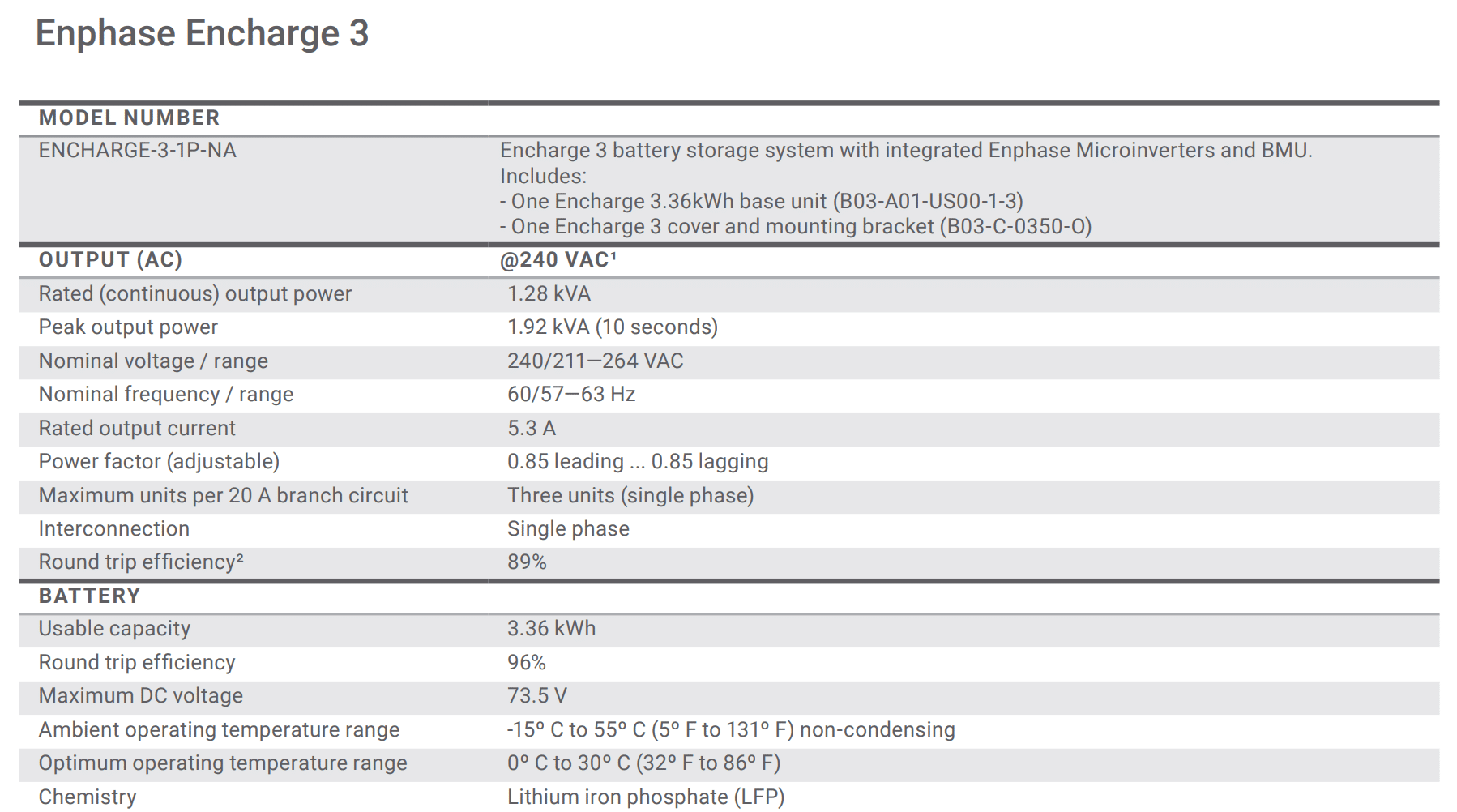
The two storage packages are built upon the Encharge 3.36 kWh battery base unit – part number B03-A01-US00-1-3. The smaller unit, the Encharge 3, can output 1.28 kW of power – with the larger unit outputting exactly three times more – 5.7 kW. Each of the base units weight 97.4 pounds, plus 53.8 pounds for the mounting hardware.
If the average household uses roughly 30 kWh over the course of a day, then the hourly demand is 1.2 kW. Meaning – on average – the output of one of the smaller units can cover a full hour of a house’s need, and the larger unit three hours worth of full on needs.
And keeping up with modern grid requirements, it allows for time of use optimization, demand charge management, and microgrid forming capability in case the grid goes down.
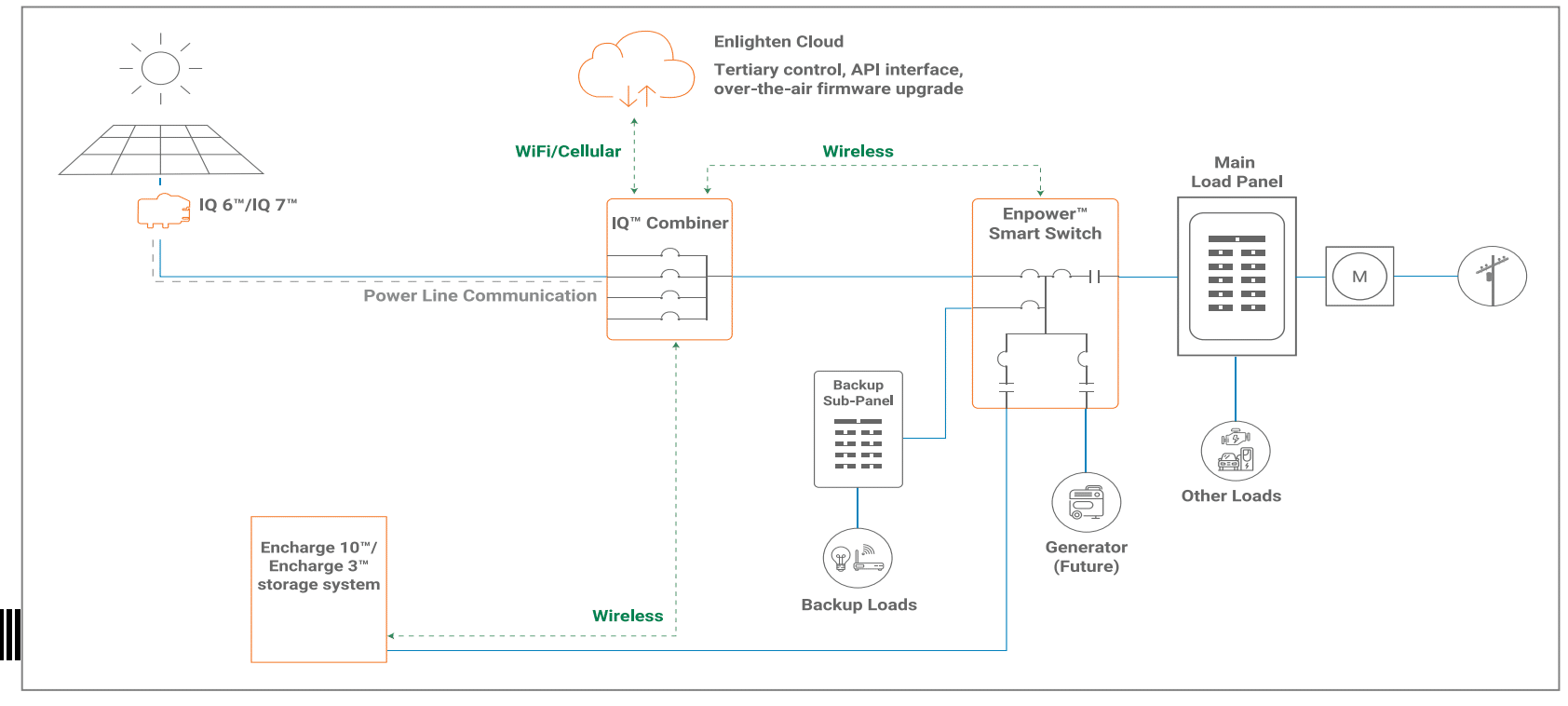
The above image is from the company’s Quick Installation Guide (pdf). The above install is of the partial home backup. Note the location of the Enpower Smart Switch and the Encharge (lower left) relative the home’s main load panel, and the backup sub-panel. The sub-panel will be connected to the home’s emergency requirements, say lighting or refrigeration. The rest of the home’s demand will run through the main load panel, and if the grid goes down, these pieces of connected hardware will also go down.
Note in the below drawing where the Enpower Smart Switch is located between the meter and the load panel. This setup will backup all of the home’s electrical load, for as long as the battery can handle it.
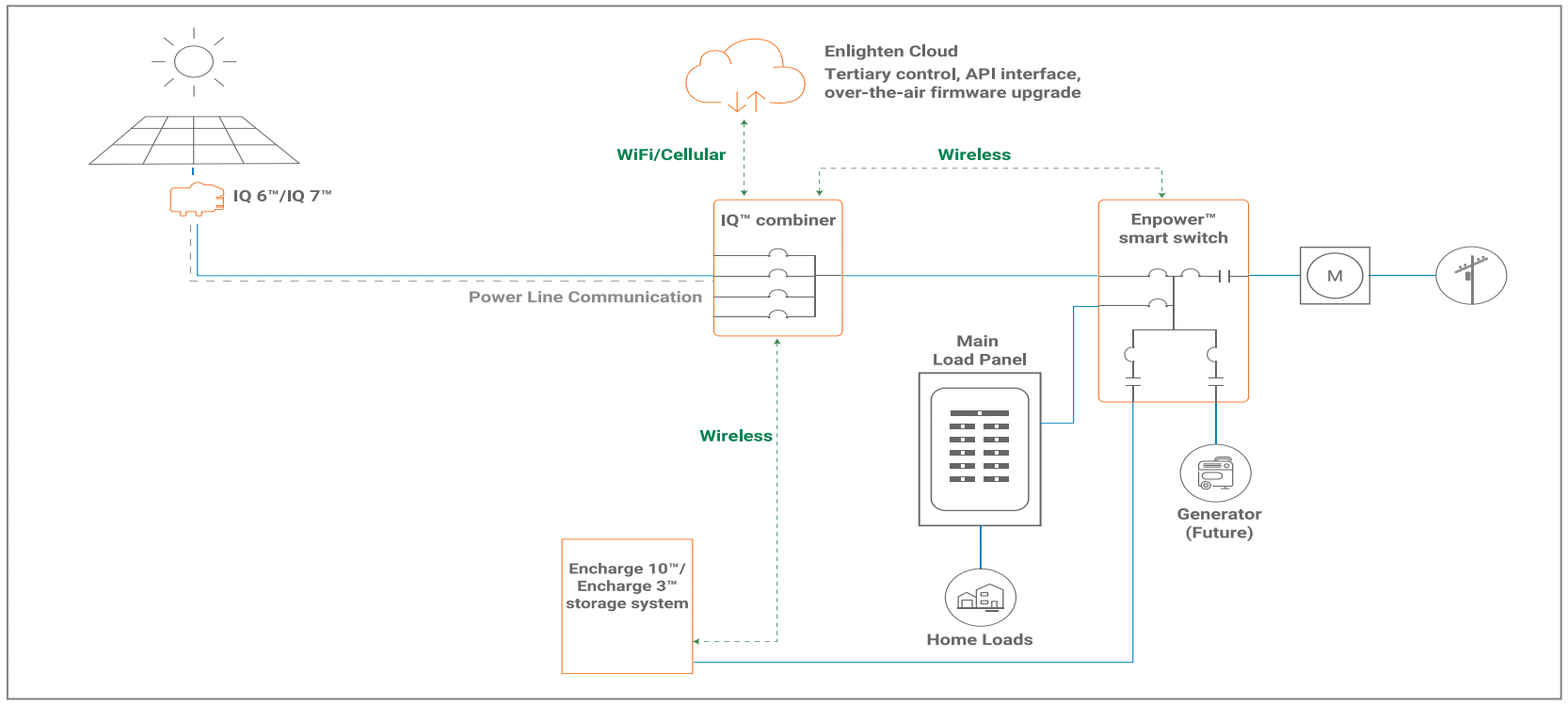
The company says pricing is available via dealers and distributors, and we’ll try to update this article to include pricing for the Ensemble Encharge 3 after reaching out to those in the know.
This content is protected by copyright and may not be reused. If you want to cooperate with us and would like to reuse some of our content, please contact: editors@pv-magazine.com.
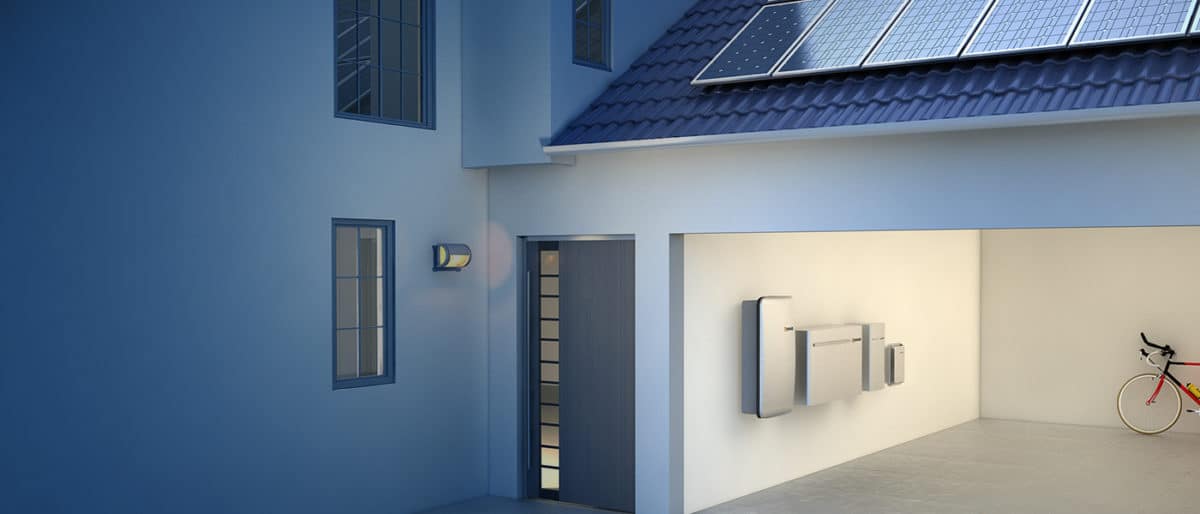
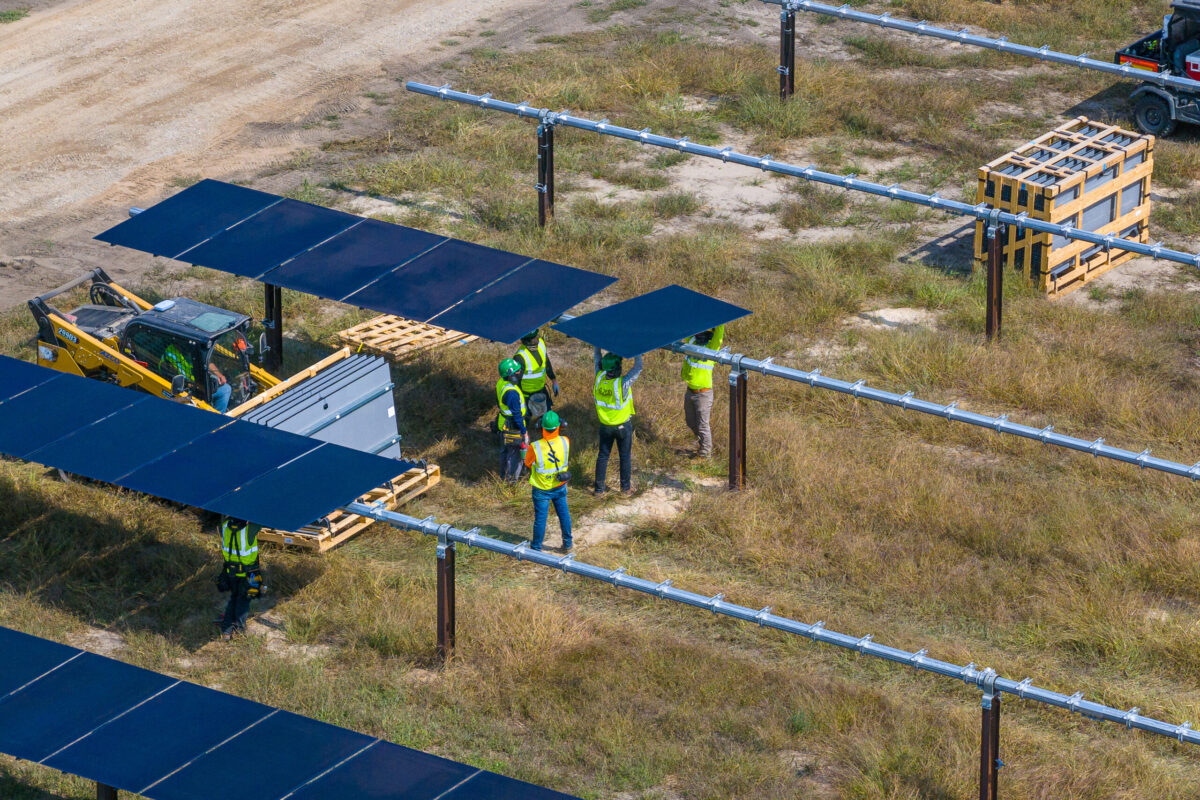






“And keeping up with modern grid requirements, it allows for time of use optimization, demand charge management, and microgrid forming capability in case the grid goes down.”
It’s getting harder for the “doesn’t pencil out crowd”. Yes residential behind the meter energy storage is expensive. With the move by the rote electric utilities across the U.S., to do things like tiered electricity rates, TOU rate spiking or just plain old “demand charges” tacked onto electric bills, due to the utility’s incompetence in running their own grid in an efficient manner. The “value” of a solar PV system with energy storage just became another “consideration” when one is thinking about having their own solar PV and ESS installed on their home’s or businesses. With the looming use of a PSPS to supposedly ameliorate the wildfire threat, a business sure could use the ability to, “microgrid forming capability in case the grid goes down.” In California the recent 72 hour PSPS, shut down businesses and it has been reported, that businesses in these PSPS areas lost a total of $2 billion dollars, when they had to close their doors during the PSPS invoked by PG&E. Folks say, 72 hours and everything in my refrigerator/freezer is ruined, but how much does this also effect the local economy when businesses are also losing money. How many times does this (need) to happen, when ROI is not the question, but consistent power available to continue on when the grid fails. Here is where the “value” argument comes into the equation of one’s daily life.
Great dentralization concept. Would be great for PG&E
in the Golden State. No more fires. No more damage.
How many of these can you install in parallel?
5.7kW is good but it not going to power any major mechanical (HVAC, mini-splits, electric water heaters).
5.7 kw is largely more than enough.
here in Europe (I’m on east of France), I use between 150 and 300 kwh per month. so a 3 kwc installation is largerly enough, even with my electic air conditioning and electric water heater.
When the home battery uptakes solar/wind on-site in the absence of your EV then pairs with your EV as a whole home and EV solution to micro-grid small groups of homes and those feed the grid to corporate PPA buyer’s and can act as wholesale buyer groups in the off-peak electric consumer market, then democratisation of power will be possible. A worthy goal may be to bring about true means of production back into the hands of the private land owners so as to devolve the political and economic power of the corporation and defacto government and restore autonomy of a free people.
Amen!
Your pricing and sizing are completely wrong. How in the world do you say that on household uses 30 kW a day but this battery pack is going to be good for somebody? 30 kW a days in extremely high number and I would have to imagine that you would be having to work at using that much electricity. Your system is completely overpriced and nowhere close to user friendly as it could be. I could give somebody a component list that would be thousands of dollars cheaper and 10 times easier to install… You guys are way missing the mark here…
@Jack
So, what is it you do like? The Sonnen Ecolinx? The new GENERAC? TESLA? LG Chem? Panasonic? How about Humless UEM?
You do understand that in the U.S. 30kW a day is an (average), 1.25kWh. In the South West States the average is around 36kW to 46kW a day, during the very hot summer months, usually three months out of the year when air conditioning is a 24/7 operation requirement, electricity use can go to 100 to 150kW a day just for air conditioning.
You seem to have missed a point or two yourself. Many utilities have demand charges, either by TOU rate spiking periods or contracts with generation entities at “premium” prices per MWh of power that is passed on to the ratepayers. These demand charges are usually based on the highest energy use in a (15 minute) period for the month. These demand charges can be in the neighborhood of $5 to $10 dollars a kWh while the demand period lasts. Yeah, during the hot summer months one can have $200 to $300 dollars added to the monthly electric bill just from demand at a particular time of the day. So, IF the system is smart enough to follow demand on the (system) one’s smart ESS could use battery power to invert stored energy to lessen or alleviate the onerous charges in a “peak demand” period. If the smart ESS is AC and DC adapted, then one could program the ESS for arbitrage. Buy off peak grid power at late night to early morning and invert this stored energy to run the early morning wake up demand on one’s home. After a couple of hours, the solar PV system will be making good usable power for the home once again.
You clearly don’t live somewhere where you need AC in the summer time, and a typical 2.5 TON AC unit is a 4 KWH device. You also must be counting fossil fuels for heating such as nat gas or diesel. A quick google search shows https://www.eia.gov/tools/faqs/faq.php?id=97&t=3 which says the US average is 15 kw per house member. Imagine that the article assumes not all of us live alone. Love your passion though!
Don’t forget the battery is intended to be connected to a solar panel array, which could/should provide 100% of the power needed while the sun is shining. It improves overall system performance and provides a few extra hours of power for people who can’t/won’t reduce their usage during times when the sun isn’t shining.
When will the system be available in New Zealand. Who is your dealer
I hope the components are available to the general public and not only available through installers. Jim Jenal says it’s not a DIY system But I would like to be first in line to prove him wrong.
Totally agree. There is NOTHING in this system that requires extensive training or experience to install. Any relatively handy homeowner can safely install, connect, and configure these components. It’s all modular and most of the mystery has been engineered out. A licensed electrician is needed either way to make the final connections and to meet local utility’s requirements.
for DYI kits, just don’t use Enphase. They always require the envoy-gateway, which adds a useless 300 or 400 euros for nothing. Buy other micro-inverters, plug them, and it works.
Jack, wondered the same thing. I told John before he needs an editor
Yeah, we all know this
Hi John, Love your articles and read you almost daily. When you find out more about Ensemble pricing and other features, can you update this article and let us know what you find? I really want to get a complete understanding of the pro’s and con’s of this new technology and if it is really as revolutionary as some are saying. Many thanks!
If you are running air conditioning, the demands are MUCH higher than you indicate. We live on Saipan, a tropical, hot, typhoon prone area. We have a 20KVA generator for backup for the house, but wanted to have a grid/generator independent aircon for the bedroom. We now have a 3,000 (small) high SEER rated d/c inverter aircon powered by a 5KW panel array going to a Tesla wall. That is its only load. That kind of power is needed because of the surge requirements. Over the last year it has been totally fine for running the A/C at night, and the battery is down to about 30% by morning, but there have been times I had to switch to grid because of an overcast day. So please; don’t fantasize that a single 5 KW inverter is going to power the house.
Looks like Solaris-shop has the Encharge-3 for $4795.00 and the Encharge-10 for $13,900.00. https://www.solaris-shop.com/lithium-ion/
Nearly all of these comments show a clear lack of understanding of the fundamentals. There’s a lot of confusion about energy (kWh) and power (kW).